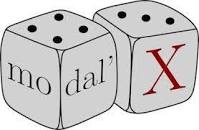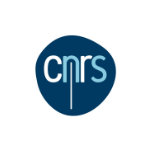

MODAL'X, UMR CNRS 9023,
UPL, Université Paris Nanterre


Bat. Allais, Bureau E10
200 avenue de la République,
92000 Nanterre, France
E-mail: xavier.mary
at parisnanterre.fr
Non-commutative Algebra
Generalized Inverses in semigroups and rings
Semigroups - structure theory, Green's relations, S-acts
Rings - Chains of idempotents, perspective elements and rings, special clean elements, general (non-unital) rings
Functional Analysis
Hilbert subspaces and Reproducing Kernel Hilbert Spaces, Subdualities, Krein Spaces
Sampling Theory
Determinantal processes and sampling
If you are interested in this workshop, please contact me: xavier.mary at parisnanterre.fr
The Webpage of the Workshop is here.
Original French manuscript, typed French version and typed English version
- D. Mosic, X. Mary and H. Zhu. Weighted w-core–EP inverse and w-pseudo- core inverse with weight v.
[34] X. Mary, On the structure of semigroups whose regular elements are completely regular. To appear in Semigroup Forum. /---/ Preprint Version
We study the structure of strongly 2-chained semigroups, which
can be defined alternatively as semigroups whose regular elements
are completely regular.The main result is a semilattice
decomposition of these semigroups in terms of ideal extensions
of completely simple semigroups by poor semigroups and
idempotent-free semigroups.
[33] X. Mary, E-solid rings, strongly IC rings and the Jacobson Radical, to appear in J. Algebra Appl. /---/ Preprint Version
We prove that the well-known semigroup property of being Esolid is actually equivalent to abelianness modulo the Jacobson radical in the case of (possibly non-unital) non-regular rings. We also give various other characterizations of such rings.
[32] X. Mary, Rings with transitive chaining of idempotents. In Contemporary Mathematics, Vol. 785, 205-212 (2023). /---/ Preprint Version
We prove that transitivity of strong or weak 2-chaining of idempotents is equivalent to centrality of idempotents modulo the Jacobson radical.
[31] D. Khurana, X. Mary and P.P. Nielsen, Idempotent chains and bounded generation of SL2. J. Pure Appl. Algebra, 227(12), 107427 (2023). /---/ Preprint Version
We investigate connections between association chains of
idempotents and bounded generation of SL2 by elementary matrices.
This enables us to construct many classes of matrix rings that
have universal bounds on the length of association chains. In
particular, many matrix rings have the property that every regular
element is special clean. We also improve the usual criterion for
checking perspectivity via association chains.
[30] X. Mary, Special clean elements, perspective elements and perspective rings. J. Algebra Appl., 22(04), 2350090 (2023). /---/ Preprint Version
Motivated by the idea of perspectivity of rings and modules, we
introduce perspective elements of a ring. We notably prove that
perspective elements form a proper subset of special clean
elements, and that perspectivity of elements is a left-right
symmetric property. An equational characterization of perspective
elements is also given and examples are provided.
[29] X. Mary, n-chained semigroups and n/2-perspective modules and rings. Commun. Algebra, 50(01), 163-181 (2022). /---/ Preprint Version
We introduce and study a new class of modules and rings we call n/2-perspective, which can either be described in terms of perspective direct summands, associate idempotents, or generalized inverses. When n is small (n<3), we recover existing classes of modules and rings: (endo)abelian, strongly IC and perspective ones. And 3/2-perspective rings are characterized by all their regular elements being special clean. Standard constructions are also discussed and examples are provided.
[28] X. Mary and P.P. Nielsen, IC rings and transitivity of perspectivity. J. Algebra Appl., 2250151 (2021). /---/ Preprint Version
We construct an example of an IC ring where perspectivity is transitive, but not all isomorphic idempotents are perspective. We also develop new criteria for checking perspectivity of idempotents in rings.
We prove that the (b, c)-inverse and the inverse along an element in a semigroup are actually genuine inverse when considered as morphisms in the Schützenberger category of a semigroup. Applications to the Reverse Order Law are given.
[26] X. Mary and P. Patricio, Characterizations of special clean elements and applications. Filomat, 34(14): 4847-4860 (2020)
We prove that special clean decompositions of a given element of a ring are in one-to-one correspondence with the set of solutions of a simple equation in a corner ring.
[25] X. Mary, Characterizations of clean elements by means of outer inverses in rings and applications. J. Algebra Appl. 19(7):2050134 (2020) /---/ Preprint Version
We characterize clean elements in unital and general rings by means of outer inverses. Some special cases, such as both clean and unit-regular elements, or strongly clean elements, are discussed. As an application, we also derive new characterizations of strongly regular elements.
[24] X. Mary and P. Patricio, Group-regular rings. Filomat, 33(11):3551-3560 (2019)
We propose different generalizations of unit-regularity of elements in general rings (non necessarily unital rings). We then study general rings for which all elements have these properties. We notably compare them with unit-regular ideals and general rings with stable range one.
[23] A. Guterman, X. Mary and P. Shteyner, On Hartwig-Nambooripad orders, Semigroup Forum, 98 (2019), no. 1, 64–74
We obtain several equivalent characterizations for the Hartwig–Nambooripad order based on outer inverses. We also introduce new partial orders on arbitrary semigroups extending these regular semigroup orders. On epigroups these new partial orders admit characterizations in terms of outer inverses.
[22] V. Loonis and X. Mary, Determinantal sampling designs, Journal of
Statistical Planning and Inference 199 (2019)60-88 /---/ Preprint Version
In this article, recent results about point processes are used in sampling theory. Precisely, we define and study a new class of sampling designs: determinantal sampling designs. The law of such designs is known, and there exists a simple selection algorithm. We compute exactly the variance of linear estimators constructed upon these designs by using the first and second order inclusion probabilities. Moreover, we obtain asymptotic and finite sample theorems. We construct explicitly fixed size determinantal sampling designs with given first order inclusion probabilities. We also address the search of optimal determinantal sampling designs.
[21] X. Mary, A local structure theorem for stable, J-simple semigroup biacts. Semigroup Forum (2018) /---/ Preprint Version
We describe a class of semigroup biacts that is analogous to the class of completely simple semigroups,and prove a structure theorem for those biacts that is analogous to the Rees--Sushkevitch Theorem.Precisely, we describe stable, J-simple biacts in terms of wreath products, translations of completely simple semigroups, biacts over endomorphism monoids of free G-acts,tensor products and matrix biacts. Applications to coproducts and left acts are given.
[20] A. Guterman, X. Mary and P. Shteyner, Partial orders based on inverses along an element, Journal of Mathematical Sciences 232 (2018), no. 6
The paper introduces and investigates partial orders that are finer than the minus partial order and are based on inverses along an element and other specific outer inverses. It turns out that in this way a number of classical partial orders can be equivalently defined.
[19] X. Mary, Weak inverses of products - Cline’s formula meets Jacobson lemma, Journal of Algebra and Its Applications 17 (2018), n. 04 /---/ Preprint Version
We study extensions of Cline’s formula and Jacobson lemma for one-sided, commuting and bicommuting weak inverses, in semigroups and general rings. In particular, we provide various isomorphisms between the (one-sided, commuting and bicommuting) weak inverses of ab and those of ba.
[18] A. Chambaz, E. Joly and X. Mary, Targeted sampling using adaptative survey sampling, chapter 29 in Targeted Learning in Data Science, by S. Rose and M. J. van der Laan (Springer, 2018)
[17] R. Bardenet, F. Lavancier, X. Mary, and A. Vasseur, On a few statistical applications of determinantal point processes, ESAIM: Procs, 60 (2017) 180-202
[16] X. Mary, On (E,HE)-abundant semigroups and their subclasses. Semigroup Forum 94 (2017), no. 3, 738-776. /---/ Preprint Version
We study semigroups that behave nicely with respect to a distinguished subset of idempotents E, both in terms of the extended Green’s relations KE and as unary semigroups. New structure theorems are given, notably in the case of central idempotents. Finally, the decomposition theorems are applied to the study of regular semigroups with particular generalized inverses.
[15] H. Zhu, J. Chen, P. Patricio and X. Mary, Centralizer’s applications to the inverse along an element, Appl. Math. Comp. 315 (2017) 27-33
In this paper, we firstly prove that the absorption law for one-sided inverses along an element holds, and derive the absorption law for the inverse along an element. We then obtain the absorption law for the inverse along different elements. Then, the reverse order law and the existence criterion for the inverse along an element are given by centralizers in a ring.
[14] X. Mary and P. Patricio, The group inverse of a product. Linear and Multilinear Algebra 64 (2016), no. 9, 1776-1784. /---/ Preprint Version
In this paper, we characterize the existence and give an expression of the group inverse of a product of two regular elements by means of a ring unit.
[13] X. Mary, Reverse order law for the group inverse in semigroups and rings. Commun. Algebra 43 (2015), no. 6, 2492–2508. /---/ Preprint Version
In this paper, we provide equivalent conditions for the two-sided reverse order law for the group inverse: (ab)# = b#a# and (ba)# = a#b#, in semigroups and rings. Moreover, we prove that under finiteness conditions, these conditions are also equivalent with the one-sided reverse order law (ab)# = b#a# .
[12] X. Mary, Classes of semigroups modulo Green's relation H. Semigroup Forum 88 (2014), no. 3, 647–669. /---/ Preprint Version
Inverse semigroups and orthodox semigroups are either defined in terms of inverses, or in terms of the set of idempotents E(S). In this article, we study analogs of these semigroups defined in terms of inverses modulo Green’s relation H, or in terms of the set of completely regular elements H(S). Results are obtained both for the regular and the non-regular cases. We then study the interplays between these new classes of semigroups, as well as with various known classes notably of inverse, orthodox, E-solid and cryptic semigroups.
[11] X. Mary, Natural generalized inverse and core of an element in semigroups, rings and Banach and Operator Algebras. Eur. J. Pure Appl. Math. 5 (2012), 160-173. /---/ Preprint Version
Using the recent notion of inverse along an element in a semigroup, and the natural partial order on idempotents, we study bicommuting generalized inverses and define a new inverse called natural inverse, that generalizes the Drazin inverse in a semigroup, but also the Koliha-Drazin inverse in a ring. In this setting we get a core decomposition similar to the nilpotent, Kato or Mbekhta decompositions. In Banach and Operator algebras, we show that the study of the spectrum is not sufficient, and use ideas from local spectral theory to study this new inverse.
[10] X. Mary and P. Patricio. Generalized inverses modulo H in semigroups and rings. Linear and Multilinear Algebra 61(8) (2013), 1130-1135. /---/ Preprint Version
The definition of the inverse along an element was very recently introduced, and it contains known generalized inverses such as the group, Drazin and Moore–Penrose inverses. In this article, we first prove a simple existence criterion for this inverse in a semigroup, and then relate the existence of such an inverse in a ring to the ring units.
[9] X. Mary and P. Patricio. The inverse along a lower triangular matrix. Appl. Math. Comput 219 (3)(2012) 886-891. /---/ Preprint Version
In this paper, we investigate the recently defined notion of inverse along an element in the context of matrices over a ring. Precisely, we study the inverse of a matrix along a lower triangular matrix, under some conditions.
[8] X. Mary, On generalized inverses and Green's relations. Linear Algebra Appl. 434 (2011), no. 8, 1836-1844. /---/ Preprint Version
(Reprint: Linear Algebra Appl. 438 (2013), no. 4, 1532–1540.)
We study generalized inverses on semigroups by means of Green’s relations. We first define the notion of inverse along an element and study its properties. Then we show that the classical generalized inverses (group inverse, Drazin inverse and Moore–Penrose inverse) belong to this class.
[7] X. Mary, Moore-Penrose inverse in Krein spaces. Integral Equations Operator Theory 60 (2008), no. 3, 419-433. /---/ Preprint Version
We discuss the notion of Moore-Penrose inverse in Kre?n spaces for both bounded and unbounded operators. Conditions for the existence of a Moore-Penrose inverse are given. We then investigate its relation with adjoint operators, and study the involutive Banach algebra . Finally applications to the Schur complement are given.
[6] X. Mary, On the converse of a theorem of R. Harte and M. Mbekhta: Erratum to:``On generalized inverses in C*-algebras''. Studia Math. 184 (2008), no. 2, 149-151. /---/ Preprint Version
We prove that the converse of Theorem 9 in “On generalized inverses in C^*-algebras” by Harte and Mbekhta (Studia Math. 103 (1992)) is indeed true : a element $a$ of a unital ring is group invertible if and only if n $aA = a^2A$ and $Aa = Aa^2$.
[5] S. Canu, C. S. Ong et X. Mary, Splines with Non-Positive Kernels. In Proceedings of the 5th ISAAC Congress , World Scientific, (2006), 1-10.
Non parametric regression methods can be presented in two main clusters. The one of smoothing splines methods requiring positive kernels and the other one known as Nonparametric Kernel Regression allowing the use of non positive kernels such as the Epanechnikov kernel. We propose a generalization of the smoothing spline method to include kernels which are still symmetric but not positive semi definite (they are called indefinite). The general relationship between smoothing splines, Reproducing Kernel Hilbert Spaces (RKHS) and positive kernels no longer exists with indefinite kernels. Instead the splines are associated with functional spaces called Reproducing Kernel Krein Spaces (RKKS) endowed with an indefinite inner product and thus not directly associated with a norm. Smoothing splines in RKKS have many of the interesting properties of splines in RKHS, such as orthogonality, projection and representer theorem. We show that smoothing splines can be defined in RKKS as the regularized solution of the interpolation problem. Since no norm is available in an RKKS, Tikhonov regularization cannot be defined. Instead, we propose the use of conjugate gradient type iterative methods, with early stopping as a regularization mechanism. Several iterative algorithms are collected which can be used to solve the optimization problems associated with learning in indefinite spaces. Some preliminary experiments with indefinite kernels for spline smoothing reveal the computational efficiency of this approach.
[4] X. Mary, Theory of subdualities. Journal d’Analyse Mathématique . 97 (2005), 203-241. /---/ Preprint Version
We present a new theory of dual systems of vector spaces that extends the existing notions of reproducing kernel Hilbert spaces and Hilbert subspaces. In this theory, kernels (understood as operators rather than kernel functions) need not be positive or self-adjoint. These dual systems, called subdualities, enjoy many properties similar to those of Hilbert subspaces and include the notions of Hilbert subspaces or Kreîn subspaces as particular cases. Some applications to Green operators or invariant subspaces are given.
[3] A. Rakotomamonjy, X. Mary et S. Canu, Non-parametric regression with wavelet kernels. Appl. Stoch. Models Bus. Ind. 21 (2005), no. 2, 153-163.
This paper introduces a method to construct a reproducing wavelet kernel Hilbert spaces for non-parametric regression estimation when the sampling points are not equally spaced. Another objective is to make high-dimensional wavelet estimation problems tractable. It then provides a theoretical foundation to build reproducing kernel from operators and a practical technique to obtain reproducing kernel Hilbert spaces spanned by a set of wavelets. A multiscale approximation technique that aims at taking advantage of the multiresolution structure of wavelets is also described. Examples on toy regression and a real-world problem illustrate the effectiveness of these wavelet kernels. Copyright © 2005 John Wiley & Sons, Ltd
[2] C. S. Ong, X. Mary, S. Canu et A. J. Smola, Learning with Non-Positive Kernels. In Proceedings of the 21st International Conference on Machine Learning, ACM Press, (2004), 639-646.
In this paper we show that many kernel methods can be adapted to deal with indefinite kernels, that is, kernels which are not positive semidefinite. They do not satisfy Mercer’s condition and they induce associated functional spaces called Reproducing Kernel Kre??n Spaces (RKKS), a generalization of Reproducing Kernel Hilbert Spaces (RKHS).
[1] X. Mary, D. De Brucq et S. Canu, Sous-dualités et noyaux (reproduisants) associés. C. R. Math. Acad. Sci. Paris - Série I : Mathématiques 336/11 (2003), 949-954.
A way to study non-Gaussian measures is to generalize Schwartz's theory of Hilbertian subspaces to the non-Hilbertian case. We initiate here a new theory based upon a given duality rather than an Hilbertian structure. Hence, we develop the concept of subduality of a locally convex vector space and of its associated kernel. We show in particular that to any subduality is associated a unique kernel whose image is dense in the subduality. The image of a subdality under a weakly continuous linear application is also given, which enables the definition of a vector space structure over the set of subdualities given a equivalence relation. We then exhibit a canonical representative. Finally, we study the particular case of subdualities of endowed with the product topology.
This page is hosted by mathrice